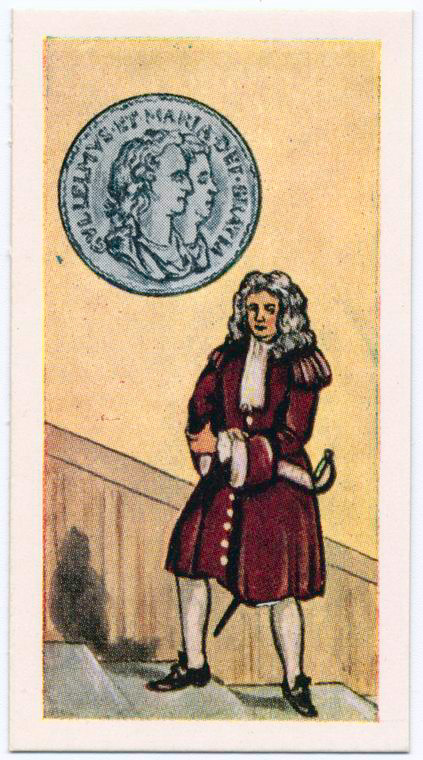Hand-Made
Hand press propaganda.
(William brought a traveling mint along too, to speed the creation of coins with the new kingly and queenly mugs. Image from the NYPL Digital Gallery.)
I've been making an effort to sort out my English history once and for all, and lately have been reading my way around the seventeenth century. And what have I learned? All about William of Orange's use, in the year 1688, of a traveling hand press to churn out political propaganda.
William of Orange, along with his wife Mary, tidily orchestrated what has come to be known as England's Glorious Revolution of 1688. This transfer of power unfolded through both military and propaganda campaigns. And, as one might imagine, that traveling printing press was part of the latter. As William moved across England on his way to London to claim the English crown for himself and his wife (who was English royalty,incidentally), he arranged for pamphlets, broadsides, and declarations, and even early comics of a sort to be printed and distributed across the countryside. Copies were given to local printers and booksellers to distribute to townspeople, and the texts were read aloud at public venues as well.
Historian Lois Schwoerer has shown in her research that on-the-fly media creation was just one element of a long and savvy print campaign on the part of William of Orange to lay the groundwork for his claim of rightful possession of the crown. In her article "Propaganda in the Revolution of 1688-89," Schwoerer explains the prominence of printing as a campaign element: "William was really prepared to keep the presses rolling for his cause after he landed in England. What better proof is there of this intention and his interest in propaganda than the fact that he brought a printing press with him--along with soldiers and horses--as part of his invasion equipment?" "Propaganda in the Revolution of 1688-89" appeared in American Historical Review's vol. 82, no. 4, p. 843-874, and is available via JSTOR at the Library.
Other sources of information on the history of this period include Britain's Bloodless Revolution, William III and the Godly Revolution, Arts and Society in England Under William and Mary, The Declaration of Rights 1689, and The Age of William and Mary. Additionally, digital editions of documents created during this propaganda campaign are ready to be viewed in Early English Books Online (EEBO), a database available at the Library.
Read E-Books with SimplyE
 With your library card, it's easier than ever to choose from more than 300,000 e-books on SimplyE, The New York Public Library's free e-reader app. Gain access to digital resources for all ages, including e-books, audiobooks, databases, and more.
With your library card, it's easier than ever to choose from more than 300,000 e-books on SimplyE, The New York Public Library's free e-reader app. Gain access to digital resources for all ages, including e-books, audiobooks, databases, and more.
If you don’t have an NYPL library card, New York State residents can apply for a digital card online or through SimplyE (available on the App Store or Google Play).
Need more help? Read our guide to using SimplyE.
